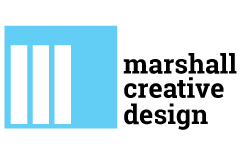- By Chris Bank
The kickoff phase sets the stage for the success of your product. Without properly conducting this phase, your team might as well be working in the dark. The worst enemy in product development, after all, is ambiguity.
During the initial design process for your product, answers will come from brainstorming on the product and from execution at the highest level, with all necessary stakeholders (along with their egos).
This article explains why defining your product matters and how to prepare and conduct creative exercises for kickoff meetings during the initial phase of product development.
The Kickoff Meeting
The kickoff meeting covers a high-level outline of the product’s purpose, who is involved in designing and developing the product, how they’ll work together and stay up to date on progress, and what the intended results or success metrics are.

The process is becoming shorter and shorter as teams become nimbler and projects leaner, and the documentation can be presented in a slidedeck, text document, wiki or project management application. We’ll cover how to prepare and conduct a kickoff meeting, as well as some overall guiding principles.
PREPARING FOR THE KICKOFF
The kickoff meeting is the equivalent of a grand opening, bringing all key players together in one room to share information and align to a common purpose. Take advantage of this one-time opportunity to energize the group, set expectations and set guidelines to complete the project on time and on budget.
Mike Sisco, CEO of MDE Enterprises, provides a comprehensive plan for kickoff success. By taking the right steps to prepare, he ran a successful kickoff meeting that included 12 team members from four company departments in seven separate physical locations. He recommends preparing with the following steps.
When speaking with stakeholders prior to the kickoff, break the ice and then dive right into the hard questions. What is the one thing that must be done right to make the product worthwhile? How would your wildest dreams be exceeded? Assure them that certain questions are “off the record” so that you can better draw out their hopes and fears for the product. These stakeholder interviews also help to accumulate a list of high-level functional requirements.
- Identify the project’s goals and deliverables.
Defining these elements will help you decide on resources and a plan for the product. Why do stakeholders care, and why are you building this product at this particular time? - Identify team members and their responsibilities.
Resources will vary according to the product’s size and complexity. Make sure to consider what’s needed from the design, marketing, development, support and operations teams. - Develop a rough product plan.
Clarify the risks and opportunities. This will help validate whether you have the right resources and help you determine timelines for tasks and milestones. - Define the key success factors.
Why is the product valuable to the company, and how will you know you’ve succeeded? Define your particular success criteria, and validate these with stakeholders.

